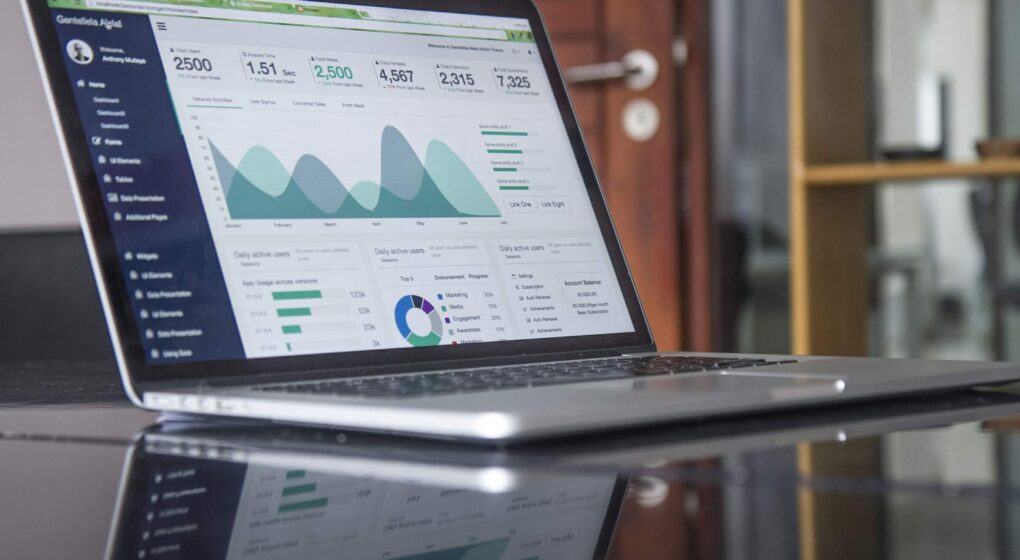
The Reporting Challenge
As marketers, we all know how important it is to keep track of the performance of our overall digital marketing efforts, especially because understanding that performance ultimately helps us make decisions about where to invest our marketing dollars and determine if our strategies need adjustment. The truth is, there are about a million tools out there that allow marketers to collect and even assess data from various channels, put it into a report, and gauge overall marketing performance. However, many marketers make the mistake of building their analytics reports like they are giant repositories of data (think endless spreadsheets!), rather than using them to tell a clear, visually rich, and compelling story that will help drive future marketing and business decisions.
So, how do you break out of data-dump mode and breathe some life and narrative into your reports? Turns out it’s easier than you think, so let’s jump in and explore the basics of reporting and data storytelling.
The Basics of Marketing Analytics Reporting
Reports are just a fact of life if you are a marketer, and putting one together is usually not the most pleasant of tasks. However, you can distill your reporting process down to a particular order of operations that makes things a little bit easier to tackle. Here’s what we recommend:
- Figure out your reporting schedule and frequency
This will largely depend on your team’s or organization’s specific needs. Sometimes more frequent reports (weekly, bi-weekly, or monthly) are necessary to keep track of specific campaigns or time-sensitive initiatives, while larger general marketing performance reports can be scheduled on a less frequent basis (quarterly or yearly). Start by determining what kinds of reports your marketing team needs to generate and then choose the cadence that is most appropriate for that type of report. Then, put an automatic reminder on your teams’ calendars or in your project management system that marks when they need to start gathering and collating data for the report. You should also schedule a deadline reminder that will let your team know when the report needs to be fully complete and ready to send out to decision-makers. That way, you never lose track of reporting time, and no one has to scramble and panic to get the report finished on time.
- Understand your audience for the report
Understanding your report’s audience is one of the most important parts of the reporting process because it will ultimately help you generate a more compelling and impactful report. Let’s use an example to demonstrate why. Say you need to give a report on marketing performance to your senior leadership team, but you know that they are extremely busy. They also may not have a solid marketing background or maybe they’re not up-to-date on the latest marketing trends. They’ll ultimately want your team’s report to tell them how well your marketing initiatives are working and help them make some general decisions about marketing investment.
In this case, you don’t need to give them every single miniscule detail, complete with a full background story and a detailed rundown from every channel. If you do that, they’re likely to glaze right over during your presentation. Instead, pull out the highlights and the most important pieces of information and build your report structure around that. Plus, make sure there are plenty of visuals and simple anecdotes that will make pithier topics easily understood.
This is why knowing your audience is so important. Whether they’re detail cravers or summarization lovers, you’ll be prepared with the most relevant information for them that’s conscious of their needs.
- Create report templates that you can use multiple times
This goes hand-in-hand with knowing your audience. Be sure to create templates for each type of report your team works with so you don’t have to duplicate efforts each time a reporting period rolls around. Once you’ve understood who your audience is and what the purpose of your report is, you’ll know exactly what metrics and key performance indicators (KPIs) you need to keep track of to give you your desired information. Then, you can build a report around those key metrics that you can use over and over again without having to comb through endless data. Keep in mind that while you can create report templates in programs like Excel or even PowerPoint (and lots of people start here before they invest in reporting software), there are reporting tools like Hubspot, NinjaCat, Agency Analytics, and even Looker Studio (formerly Google Data Studio) that can help you pull the exact data you need for your reports and visualize it during each reporting period.
Data Storytelling: What is it and how do you leverage it in your reports?
Now that you have some tips to help you organize and optimize your data and reports, we can get to the fun part: data storytelling!
What is data storytelling?
Data storytelling is the process of drawing insights from your data and communicating those insights via a compelling narrative (also utilizing visuals) that will empower your audience to make decisions and take action.
Data storytelling is becoming a salient and extremely marketable skill, especially for marketers. While most people might think that data analysis primarily requires lots of “hard” mathematical skills (and it definitely does), the soft skills of communication and writing are just as important, especially when it comes to distilling insights from your data into a tool your organization’s decision makers can actually use.
Why does data storytelling matter?
Humans love stories. In fact, according to Harvard Business School Online, we’ve been devouring stories since the Cro-Magnon era and using them to document events and record the happenings of day-to-day life. In fact, our brains vastly prefer organized stories to pure data, and this is especially true in today’s world where information is quite literally everywhere. Show us too much and our brains get overwhelmed. Put things into a narrative, and it actually helps our brains convert information into long term memories.
How do you build a narrative?
Building a data narrative is actually pretty similar to building any narrative.
- Start by identifying your “characters.” This is where leveraging tools like customer personas can really have an impact. Your customers should always be at the center of your story, and incorporating what you know about them in colorful detail will help your audience emotionally connect to your story.
- Then, set the scene. This is more than creating a sweeping executive summary. This should set the tone of your report/story and tell the audience exactly what topics, struggles, and wins you are going to explore throughout your report. It should also introduce them to your characters.
- Get to the heart of your problems and your wins. Use your data to find the root causes behind any issues or wins that have occurred and explore those with your audience. Maybe your website traffic or conversions are declining, or maybe you find that your current strategy is performing extremely well. Take your audience on a journey that explores all the causes behind your findings so that they’re prepared to hear your solutions or ideas.
- Finally, find a resolution. This is where you will propose solutions to struggles your organization may be experiencing, or where you may suggest that maintaining the current course is best. Whatever you recommend, make sure to tie it all together with your characters, settings, and root causes.
Don’t forget to visualize!
Visuals are extremely important for underscoring and demonstrating all the points you make throughout your narrative. These can be charts, graphs, videos, pictures, infographics, or other assets that will help visually communicate your narrative to your audience. Visuals really help distill complex insights from your data so that even your most data-averse audience members will still be able to understand your narrative and feel empowered to use it to make business decisions.
The Takeaway
Let’s face it – reporting can be a challenge, especially when it comes to communicating the results of your marketing efforts to an important audience. Luckily, by following basic reporting best practices like scheduling your reports, understanding your audience, and creating report templates, you can standardize your process and get it down to a science rather than a struggle.
But, there’s another, softer dimension to marketing reporting that will add a ton of value to your reports, and that’s data storytelling. Data storytelling is perhaps the most effective way to communicate complex insights to your audience because it establishes a clear narrative behind the results you uncover from your data analysis and lets your audience apply that narrative to business decision-making. The more you practice data storytelling, the better you’ll be at drawing the real value from your reports, transforming raw data into comprehensible and actionable insights.
About VONT Performance Digital Marketing
At VONT we believe that change is the only constant in the digital world – and that excites us. When tools and environments are constantly changing, new opportunities to help our clients achieve success are constantly arising. Each new advertising technology, social platform, or design approach allows us to improve on the results we achieve for our clients.
We believe in this idea of continual fine-tuning so much that we named our company VONT, which means to achieve exponential improvement in incremental steps. It is our core belief, and the reason why we are not simply a web design company or simply a digital advertising agency, but rather a long-term, single source partner providing a comprehensive array of web development and digital marketing capabilities.


